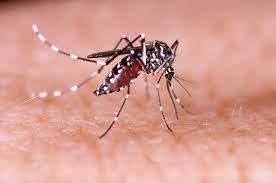A recent study published in PLOS Global Public Health reveals that participating in park runs significantly enhances life satisfaction while also offering substantial economic value. These weekly community events, which promote physical activity, have been shown to positively impact both physical and mental health, particularly among individuals who were previously inactive.
What Are Park Runs?
Park runs are free, inclusive community events held weekly, where participants run or walk five kilometers in a social setting. The initiative, recommended by the World Health Organization (WHO) as part of its Global Action Plan on Physical Activity, aims to address the growing problem of physical inactivity at the population level. Having been in operation for more than two decades, park runs now engage hundreds of thousands of people worldwide, offering participants a sense of achievement, social connection, and improved health outcomes.
The Study’s Findings
The study tracked 548 new park runners over six months, measuring their life satisfaction and physical activity levels. While participants maintained a steady level of physical activity (3.1 to 3.4 days per week), their life satisfaction saw a significant boost, rising from an average score of 7.489 to 7.746 on a 10-point scale. This improvement was particularly notable among those who had been the least active at the start of the study.
Researchers used a metric called the Wellbeing-Adjusted Life Year (WELLBY) to quantify the benefits. The WELLBY measures changes in life satisfaction, with a one-point improvement estimated to be worth £13,000. Over six months, park runs contributed to a total of 51,341 WELLBYs, which translates to an economic value of £667.4 million for the 400,167 participants.
Cost-Effectiveness of Park Runs
In terms of cost-effectiveness, park runs significantly outperformed other population-level physical activity interventions. The benefit-to-cost ratio for park run-related improvements in life satisfaction ranged from 16.7:1 to 98.5:1, depending on the method used to calculate the added value. These ratios demonstrate that park runs are up to 16.7 times more cost-effective than other similar interventions.
How Park Runs Improve Wellbeing
The increase in life satisfaction among park runners is primarily linked to the boost in physical activity. While improved mental health also played a role, physical health was found to be the main driver behind the participants’ increased happiness. The community-focused nature of park runs, with their fixed times and locations, also fosters social connections, contributing to overall wellbeing.
Economic Benefits
The study highlights the economic advantages of park runs, which are estimated to generate up to £266.3 million in economic benefits over six months. This makes park runs a highly cost-effective public health intervention, providing both individual and societal gains.
Conclusion
The study underscores the potential of park runs to serve as a mass intervention for improving physical activity and life satisfaction. The initiative is particularly beneficial for individuals with low levels of physical activity, offering both health improvements and social engagement. While the six-month study demonstrates significant gains, further research is needed to assess the long-term sustainability of these benefits.
With their impressive benefit-to-cost ratios and wide-reaching impact, park runs stand out as a promising tool in the global effort to increase physical activity and improve public health outcomes.
Journal reference: Haake, S., Quirk, H., & Bullas, A. (2024). The impact of parkrun on life satisfaction and its cost-effectiveness: A six-month study of parkrunners in the United Kingdom. PLOS Global Public Health. doi:10.1371/journal.pgph.0003580.












